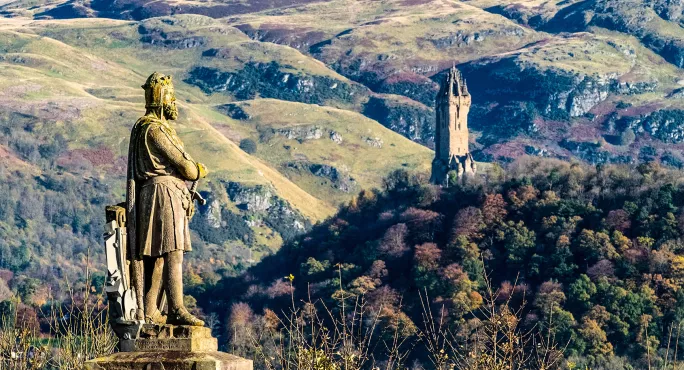Used creatively, Scotland’s historic environment and heritage resources can support learning across the curriculum.
Scotland’s historic environment is all around us. It connects the physical evidence of human activity, such as buildings, landscapes and artefacts, with the events and stories associated with them and the records that reveal how it has changed over time.
Wherever you live in Scotland you have access to the local historic environment. This could be a church or castle, standing stones, a changing high street, objects in your local museum, photographs in your local gallery or archives in your local library, your home or even your school.
Rich national learning resource
Viewed as a rich national learning resource, it can be used to support topics and themes across the curriculum and in wider areas such as skills development and wellbeing. As a source of inspiration, it is an engaging and varied medium for project work and supporting creativity.
Many historic sites sit within rich natural environments, providing opportunities for exploration, discovery, and outdoor and play-based learning.
The historic environment provides access to our shared culture and heritage. For example, visiting a historic site lets learners experience the places where events in history really happened; having a go at a traditional skill provides hands-on experience of how buildings were built and are conserved; and investigating archives can help learners understand how places and people have changed over time.
But it’s about much more than history. Places, objects, stories and records can provide creative inspiration, unique experiences and multisensory environments to support teachers with all types of subjects, themes, programmes and outcomes.
For example, Historic Environment Scotland (HES) provides free learning visits to over 300 historic sites, travel grants for schools and free access to online support resources, including and .
Schools can explore Edinburgh Castle with an interactive map and gain with almost half a million captioned records, images, film clips and sounds relating to national and local culture; there are also resources and case studies on the .
Ideas for teachers and learners
A new castle-construction zone at Stirling Castle encourages play-based learning to introduce early years learners to how and why grand buildings were made.
A heritage theme can help deliver science topics: HES and Glasgow Science Centre offer , an interactive activity that enables learners to become forensic scientists investigating mystery skeletons, soil erosion and weathering.
Learning for sustainability is another priority for Scottish schools. The resources look at threats facing heritage today, including climate change, heritage crime and sustainable tourism, while highlighting careers related to these topics and showing how to integrate topics such as the circular economy and travel and tourism.
Our new framework sets out this approach and our key aims for outreach and learning and the should help schools find some inspiration amid historic sites near and far. It’s worth saying again: Scotland’s historic environment is a rich and exceptionally varied national learning resource.
Craig Fletcher is head of learning and inclusion at Historic Environment Scotland
For the latest in Scottish education delivered directly to your inbox, sign up for Tes’ The Week in Scotland newsletter





